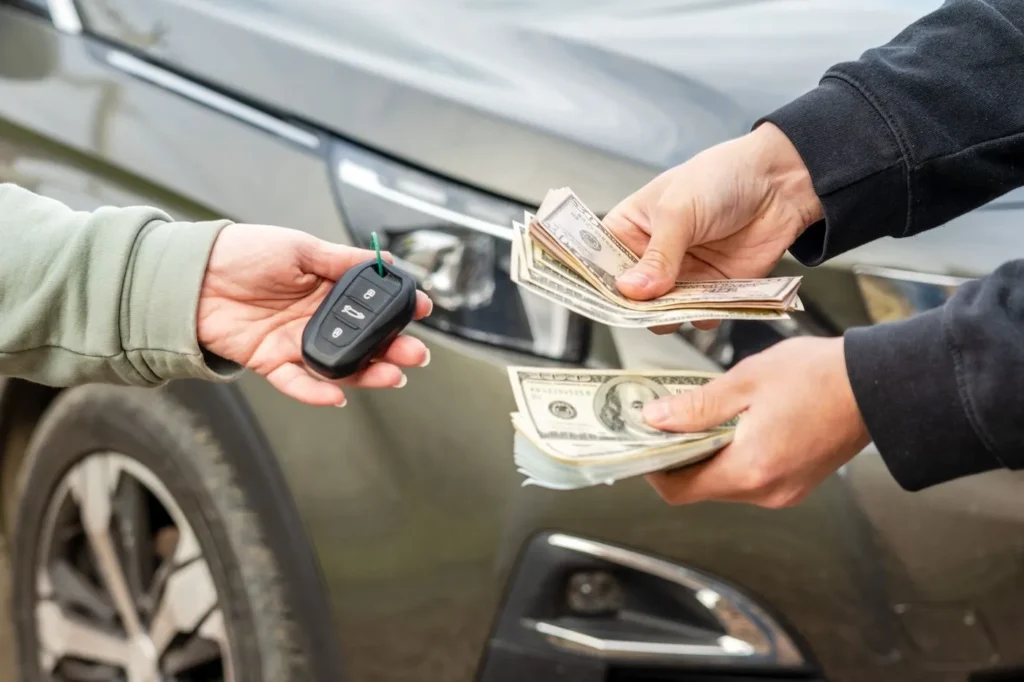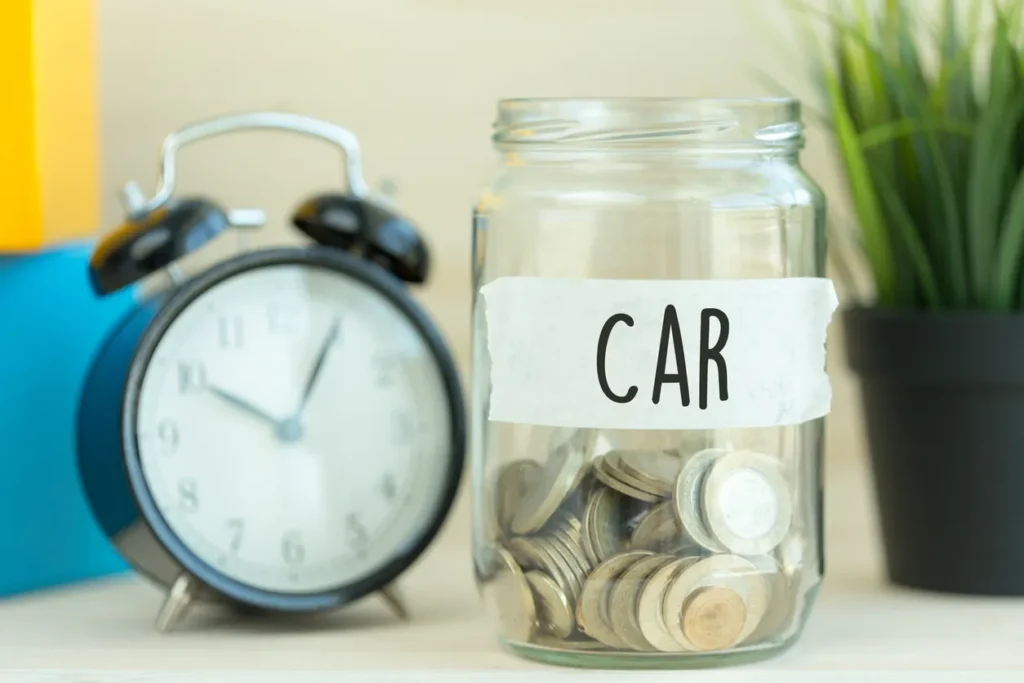A car is a necessary liability due to its ability to hasten your movement around in comfort and ease. Therefore, owning a car is of great importance to be timely and attend to your daily duties comfortably.

You can’t just get a car without proper planning; thus, you have to learn how to save money for a car, especially for people with meager salaries, and also to make an intelligent and well-informed purchase.
For a brand-new car or a fairly used one, the expenses of buying, maintaining, and insuring the car can indeed be exorbitantly high. Therefore, with a little planning and a few saving strategies, you can have the car you need much easier than imagined.
Why Are Cars So Expensive?
Buying a car means more than just paying the sticker price of a vehicle, and there are many reasons cars cost so much:
1. Cost of Manufacturing
Designing, building, and assembling a vehicle is quite expensive. The factories need the latest machinery, expert workers, and raw materials like steel, plastic, and electric components to manufacture cars, all adding up to increasing the cost of production.
2. Technological Advancement
Today, cars come loaded with several technological features, including those for infotainment, navigation, safety, and environmental concerns. This strengthens the functionality and, hence, hikes the prices of cars.
3. Costs of Regulation
Car manufacturers are required to adhere to numerous strict sets of regulations in terms of safety and environmental performance. These include limits on emissions, fuel efficiency, and crash safety. These various sets of regulations, while invaluable for both consumers and the environment, add to car prices.
4. Inflation and Supply Chain Problems
Overall inflation and disruption in the supply chain of raw materials have shown their dent in increasing car prices. Primarily, new cars have become costlier in the last couple of years with increased prices due to short supply.
5. Financing and Interest Rates
Most buyers choose to finance their cars, adding on thousands of dollars in interest over a long time. Higher interest rates or longer terms can significantly inflate the total cost of purchasing a vehicle.
By understanding these cost drivers better, you will be more prepared and set a realistic savings plan for your new wheel.
8 Ways to Save Money for a Car

Now that you understand why cars are expensive, let’s get into actionable ways in which you can help yourself save money to fund your vehicle. Following are eight ways to build a car fund and get behind the wheel sooner.
1. Set a Realistic Budget
Before you start saving, choose a budget and how much you want to spend on a car. Be realistic about how much you can afford without indebtedness.
Consider all the associated costs: registration, taxes, insurance, and ongoing maintenance. A clear budget helps you avoid overspending and motivates you to save.
2. Open a Dedicated Savings Account
Open another savings account for your car fund and save money efficiently. You would be able to keep track of how much you have gathered so far, and it will keep the money out of reach for other, less important purchases.
Many banks have high-interest savings accounts that let you grow your savings faster.
3. Automate Savings
Automation is a powerful way to save big. Set up automatic transfers from your checking account into your car savings account on every payday.
The littlest of amounts put in faithfully and consistently tend to add up with time and could be what keeps you right on track, all without thinking about it.
4. Cut Unnecessary Expenses
Review areas in which you can cut back spending. This might be dining out less frequently, giving up daily runs to the coffee shop, or canceling subscription services to which you no longer pay attention.
Take the money that you save by not spending on non-essential items and transfer it directly into your car savings account.
5. Sell Unwanted Items
Take an inventory of things you no longer use or need and try to sell these things online or through a yard sale.
You can utilize websites like eBay, Craigslist, or Facebook Marketplace to get some money in return for your junk. This bonus money can go a long way toward your car fund without ever touching your daily budget.
6. Make Use of Windfalls and Bonuses
If you get a tax refund, a bonus at work, or some monetary gift, immediately deposit it in the savings account for your car. Windfalls offer one of the best times to make big contributions toward your goal without affecting your normal monthly expenses.
7. Consider a Part-Time Job or Side Hustle
If you seriously want to save money for a car quickly, consider taking on a part-time job or a side hustle.
Other options might include freelancing, gig economy jobs like ridesharing, and selling items you can make online.
Apply all the proceeds of this side hustle toward your savings for a car to reach your goal more quickly.
8. Save on Your Current Transportation
If you already spend a fortune to get to places, try finding ways to cut down on transportation costs and stash more money away for your future car.
You do this through carpooling to work, using public transportation, or biking for shorter distances. Money not spent on gas, parking, and ride-share services can go directly to car savings.
Car Insurance and Its Cost

While saving for a car, equally important is getting a car insurance quote since it is an indispensable requirement if you own a car.
The cost of car insurance is determined by many factors, such as the model of the car you buy, driving experience, location, and coverage scope. Following is some important information about the cost of car insurance:
Factors Affecting Car Insurance Costs
The type of vehicle also determines the premium amount. Luxury cars, sports cars, and high-performance vehicles will fall into higher categories since their repairs and replacement are more costly.
- Aging and Driving Experience: Younger drivers and/or those with a record of accidents or traffic violations are rated as higher risks by insurance companies, and their premiums will be accordingly higher.
- Location: Where you reside affects your insurance rates. In this case, more urban areas ensure higher rates compared to rural areas, simply because the risk of accidents, theft, or vandalism is much higher.
- Type of Coverage: Full comprehensive coverage against theft, fire, and other non-collision-related damages is more costly but protects better than minimum liability insurance.
- Shop for Quotes: Because different insurance companies charge different rates, the best way to get a good deal is by shopping around and comparing quotes.
- Consider a Higher Deductible: By choosing a higher deductible, the cost of your premium will be lowered. But this means you will pay more when filing a claim.
- Bundle Insurance Policies: Most insurance companies will offer a deal when you tie your car insurance to other policies like homeowners or renters.
- Take Advantage of Discounts: Most of these insurers offer a discount on safe driving, taking a defensive driving course, or installing anti-theft devices in your car.
- Maintain a Good Driving Record: Avoiding traffic infractions and other accidents will keep your premiums on the lower side over time.
- Budgeting for Insurance: To save for a car, though, one needs to factor in the cost of insurance. Car insurance can range from a few hundred to a factor over a thousand dollars, depending on your need for coverage and personal factors. Research insurance rates for the type of car you will buy and add those costs to your overall car budget.
Parting Words
Saving money for a car is a thrilling yet demanding financial undertaking. Knowing how to save money for a car and following real strategies to save in real life will allow you to come up with the money without having to break the bank.
Also, don’t forget to budget for the cost of car insurance and add that to your total budget for owning a car. Have a clear plan and be disciplined with savings; you will afford that dream car and live a financially stress-free life.







